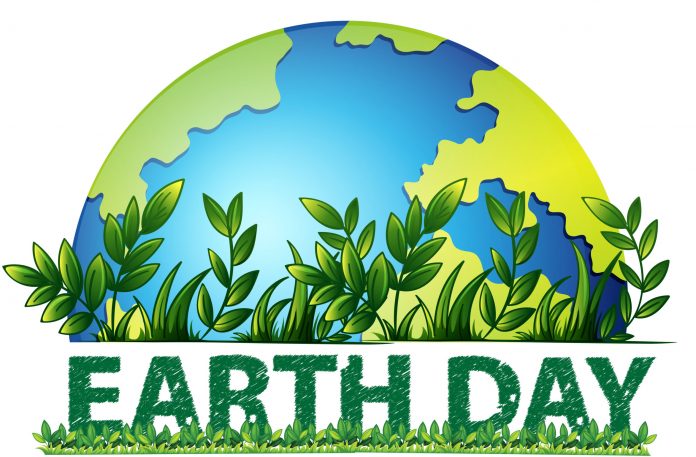Story by Jeanne Melchior
I’ve been a forest activist for many years, and when I recently read The Hidden Life of Trees by a German forester, Peter Wohlleben (published 2016) and The Mother Tree by Susan Simard (2021) I was reminded of an essay I wrote for Earth Day in 1994, and as I re-read it, I found it to be just as timely today as when it was first printed in the Ferdinand News.
Sadly, in those past 25 plus years, we’ve not managed to save our forests, not here, not globally, and development continues to erode our ancient legacy. Forests have so much to teach us, and forest ecologists such as Wohlleben, Susan Simard, and Indiana’s own John O. Whitaker and Marion Jackson are beginning to make us aware of the importance of preserving the vast unexplored storehouse of information old-growth forests contain, much of it below the surface. Would we burn books containing ancient wisdom or in any way destroy them? Would we destroy precious artifacts of the past? Surely we would be up in arms if our museums were looted and sold to the highest bidder. Why would we then not demand protection of our remaining forests and allow even the damaged ones a chance to become more than cut-over woodlots? I feel more strongly than ever that we need to protect t all our public lands, to study them and learn from them and allow them to become the forests of the future. Some things are beyond price, and forests are chief among them.
You Can’t Plant a Forest
Or Why I Became a Tree Hugger
Environmentalists are often laughed at these days and are thought of as being against progress, among other things. But I’m proud to be an environmentalist and welcome the term “tree-hugger”. The truth is, I recognize why trees are important, and why planting trees isn’t enough.
Because the old growth forests in Europe were gone by the middle ages, I imagine that the first settlers here in Southern Indiana were unprepared for what they found when they arrived. George Wilson describes this in his History of Dubois County:
“For Scores of miles in all directions…the land was covered with a more or less dense growth of hardwood trees from one hundred to one hundred fifty feet high; their tops so interlaced, when in full foliage, that the rays of the sun seldom reached the ground. On dark days, in many parts of the county, the shade was so deep, that, in the forest, noon daylight was no stronger than twilight.”
Those first settlers must have experienced more than a little dread in these dusky mysterious wilds, and felt an urgency to open up the dark woods to let the light in. I must admit that I get a bit uneasy walking alone in the tamed woodlots of today, especially at dusk. When I hear rustling of unknown origin, or an owl’s eerie cry, even though I know that people are just over the next ridge, and that bears and wolves no longer roam here, a tingle of fear connects me to my ancestors, and I understand that we wouldn’t go back to the way things were even if we could.
And yet, as these ancient forests become more of a distant memory, we become ever more aware of how much we need them. Even if trees didn’t produce oxygen life depends on, if they didn’t clean the air, if they didn’t provide materials for our shelter, we would still value them for their beauty.
But while trees are vitally important, they are not enough. Forests are much more than trees. They are living collaborations of plant, animal and mineral. They provide breeding and nesting space for a wide variety of insect eating birds who need canopy. They create weather patterns, affecting rain and snowfall, flooding and drought. They are self-sustaining ecosystems, generating energy, storing and collecting it. They are a living reminder of the interconnectedness of all things. They can’t be planted because they grow from what they once were—the dead re-birthing, re-fertilizing the new. Forests can exist without humans, but we cannot exist without them.
And so as Earth Day comes and goes, and we take a few minutes to stop and examine our own fragile connections to this wonderful web of life we are caught up in, I invite you to think about your own relationship to forests, and to the steady development that is destroying what is left of our forests, that is even replacing farmland with subdivisions, factories, hotels, and parking lots. Perhaps you’ll plant a tree, a gift for future generations. Maybe you’ll understand that your neighbor’s woods is more important than a new highway. Or maybe you’ll do what I did the first time I hugged a tree. Maybe you’ll find out how you can get involved to protect the forests we have left. Maybe you’ll become a tree hugger and proud of it.
(Jeanne Melchior has been a long time member of Protect Our Woods, serving as newsletter editor for many years. She is still an ardent supporter of forests everywhere and believes that there should be no logging or extraction of any kind on public lands. Forests should be held in trust for future generations. Protect Our Woods is currently being resurrected, and continues to lobby for the preservation and protection of all our public lands.)






